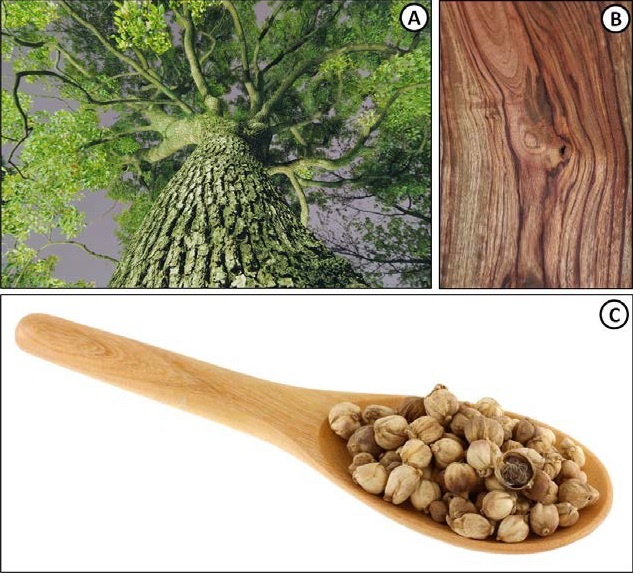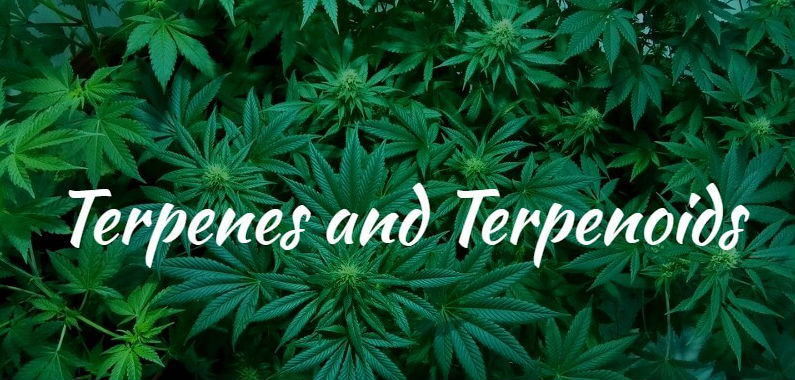Camphor and Camphene: What’s the Difference?
Almost everyone is familiar with the multitude of today’s common products containing the substances camphor and camphene. And yet, camphor and camphene themselves are relatively unknown. They are both naturally-occurring terpenoids primarilyfound un laurel trees (Cinnamonum camphora). [1] Camphor is a pungent terpenoid used primarily as a fragrance additive and in cooking recipes, while camphene, a monoterpene,is often used as a camphor substitute. It is sold as a color-less crystal with a strong, camphor-like scent, and is an ingredient in many foods, ointments, and topical creams. [1]

Common Plants Containing Camphor and Camphene
Camphor is found in the bark of the camphor laurel, an evergreen tree native to certain regions of Asia, such as Sumatra and Indonesia, and in many members of the laurel tree family.[2] Camphor can also be found in many herbs like rosemary, basil, and mint, albeit in much lower concentrations than laurel trees. Camphene can be found in many essential oils derived from natural sources such as nutmeg, lavender, and sage. [2] Camphene also can be found in the root systems of ginger and valerian plants, as well as in the bark of cypress and fir trees.

Figure 1. Cinnamomum camphor tree, wood, and seeds. [2]
As two of the 150 minor terpenes in cannabis, camphor and camphene’s pungent and musky odors are often likened to that of fir needles and damp earth and can be mistakenly identified as the major cannabis terpene constituent myrcene.
Historical Significance
The medicinal benefits of camphor and camphene have been well documented for centuries. [2] In Asia, camphor has long been used in the treatment of pain, swelling, and inflammation and served as a topical analgesic, providing a cooling effect for sore muscle tissue.[3] The Japanese were a country that used to manufacture camphor. [4] It was used as a flammable additive which served to increase the flame’s brightness, and the Japanese took to adding small amounts of camphor to their gunpowder displays. [5] In the Middle Ages, Europeans noted camphor’s antimicrobial and olfactory qualities and made use of it as a fumigant during the ravages of the Bubonic plague. [6]
Present-Day Uses
Today, camphene is used as a bronchial stimulant and expectorant and helps clear congestion when inhaled. [7]On the non-medical spectrum, camphor is being exploited in the science of material biochemistry for the synthesis of water-soluble carbon nano particles. [8] Camphor, it turns out, can be used as a doping agent (small additive) to aid in the assembly of and alter the electric characteristics of carbon nano tubes. [9] Who would have thought!
Terpenes common to the cannabis plant have been found to offer a plethora of valuable medicinal benefits. In addition to constituting each cultivar’s distinctive aroma, terpenoids have the potential to act as anti-oxidants, helping regulate the body’s inflammatory response to cholesterol-accumulation and thereby saving many lives. The anti-oxidant potential of camphene was assessed and found significant in murine models so far. [10]
With camphor’s usefulness in the field of nanotechnology and camphene’s current medicinal value, the pace of research into these two molecules is sure to increase in years to come.
References
- Rahman, FA, et al. “In vitro Antibacterial Activity of Camphor oil against Oral Microbes”. Int. J. Pharm. Sci. Rev. Res., 2016;39(1):119-121 [Times cited = 9, Journal impact factor = 2.544].
- Chen, W, et al. “Camphor–a fumigant during the Black Death and a coveted fragrant wood in ancient Egypt and Babylon–a review”, Molecules, 2013;18(5):5434-54[Times cited = 9, Journal impact factor = 3.098].
- de Cassia da Silveira, E Sa R, et al. “Analgesic-Like Activity of Essential Oil Constituents: An Update”. Int J Mol Sci. 2017;18(12). pii: E2392 [Times cited = 1, Journal impact factor = 3.687].
- Hattori, A. “Camphor in the Edo era – camphor and borneol for medicines”. Yakushigaku Zasshi. 2000;35(1):49-54 [Times cited = 2, Journal impact factor = N/A].
- Hattori, A. “Camphor in the Edo era fireworks”. Yakushiqaku Zasshi.2001;36(1):27-31[Times cited = 1, Journal impact factor = N/A].
- Donkin, R.A. Dragon’s brain Perfume: An Historical Geography of Camphor; Koninklijke Brill: Leiden, The Netherlands, 1999; p. 141.
- Hamidpour, R, et al. “Camphor (Cinnamomum camphora), a traditional remedy with the history of treating several diseases”, Int. J. Case Rep. Images, 2013, 4(2):86–89[Times cited = 13, Journal impact factor = N/A].
- Oza, G, et al. “Camphor-mediated synthesis of carbon nanoparticles, graphitic shell encapsulated carbon nanocubes and carbon dots for bioimaging”. Sci Rep. 2016; 6:21286[Times cited = 15, Journal impact factor = 4.122].
- Kumar, M.; Ando, Y. Single-wall and multi-wall carbon nanotubes from camphor-a botanical hydrocarbon. Diamond Relat. Mater. 2003, 12, 1845–1850[Times cited = 117, Journal impact factor = 2.125].
- Tiwari, M, and Kakkar, P. “Plant derived antioxidants – Geraniol and camphene protect rat alveolar macrophages against t-BHP induced oxidative stress”. Toxicol In Vitro. 2009 Mar;23(2):295-301[Times cited = 14, Journal impact factor = 2.903].








